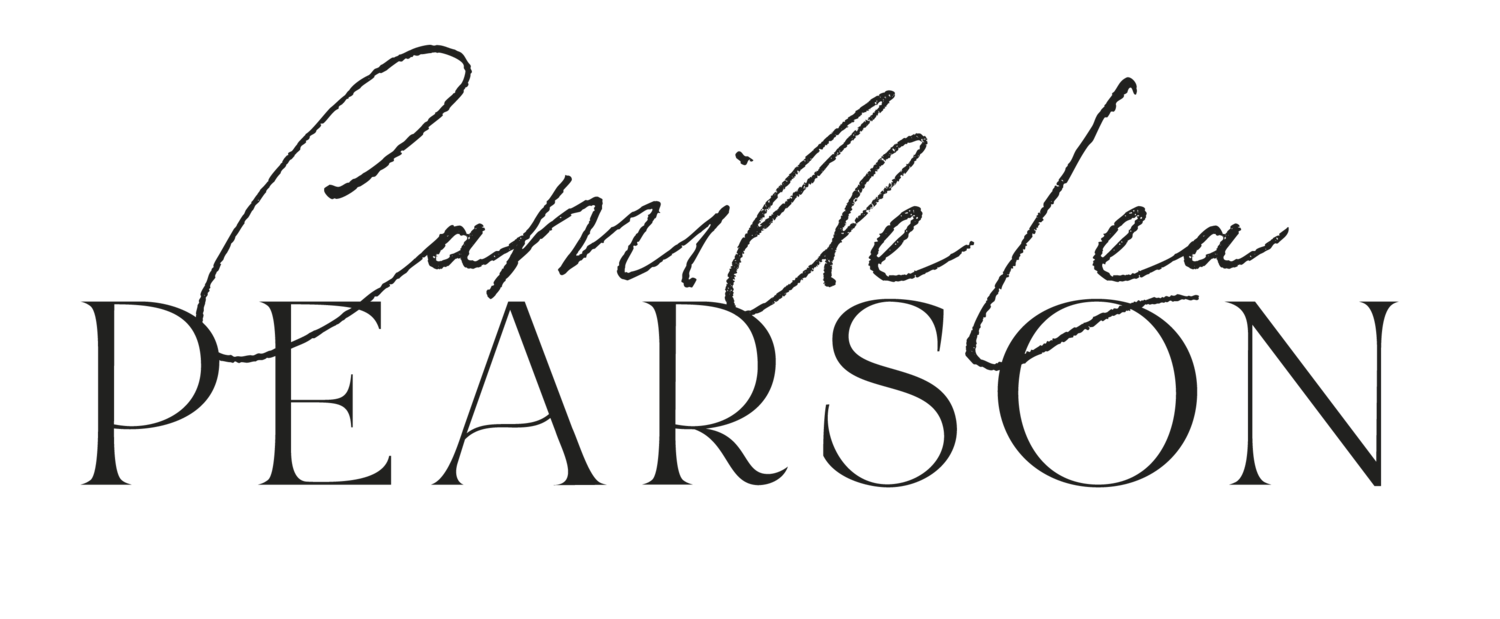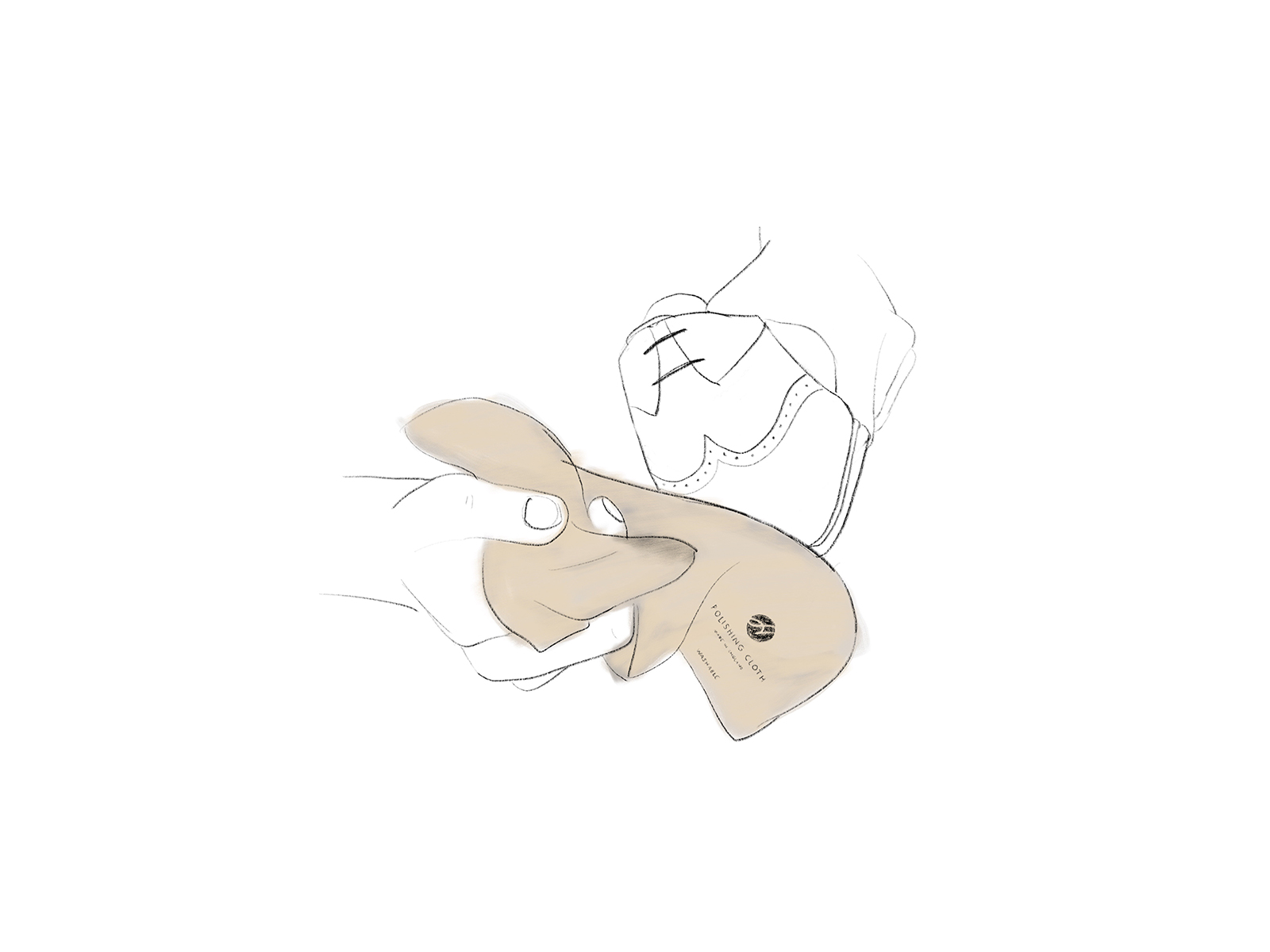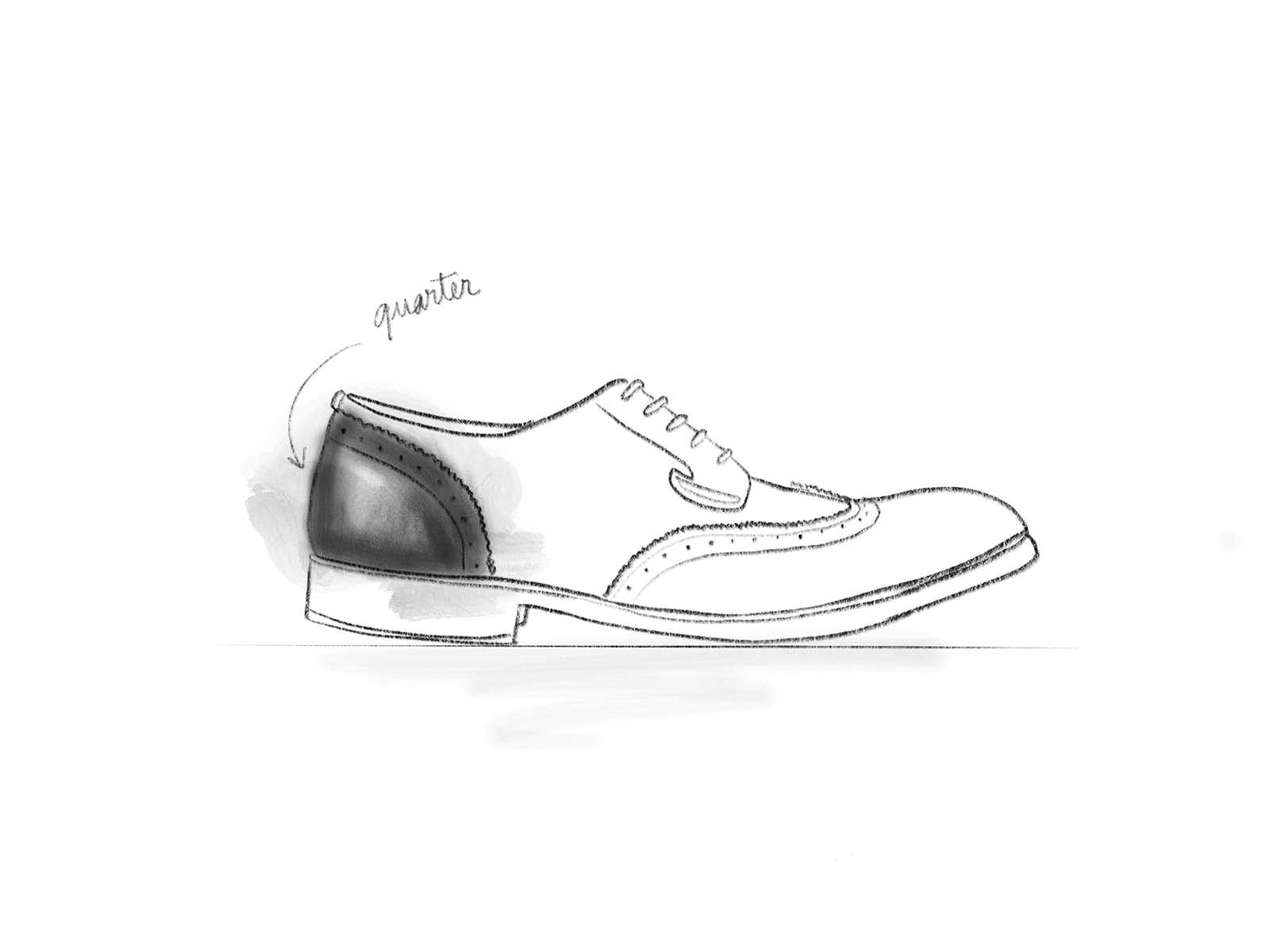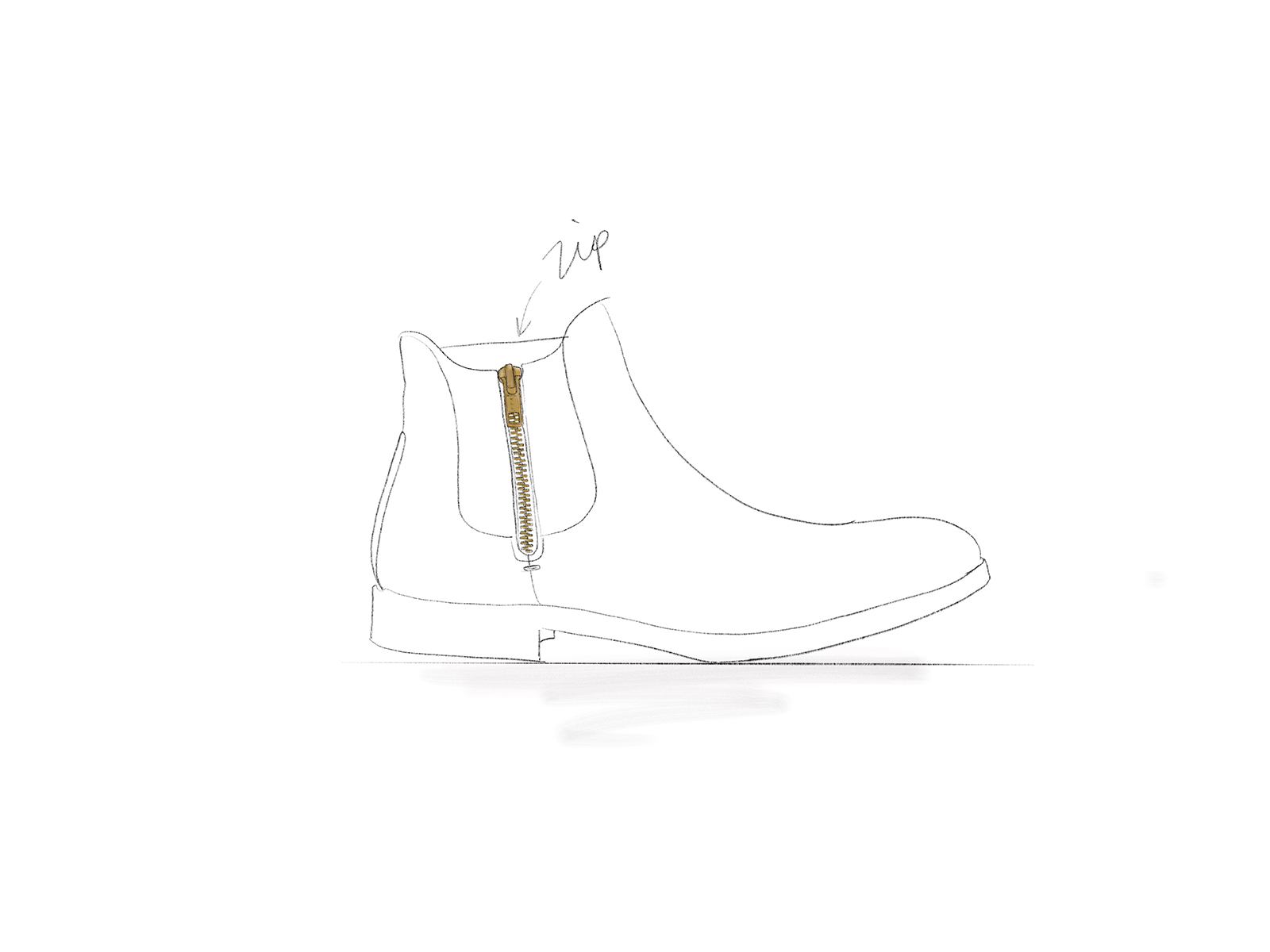HUDSON SHOES
Commission for Hudson Shoes to illustrate a shoe dictionary for their blog. I had to create 26 unique illustrations based around the shoe vocabulary.
A
Ankle boot (n.)
The one type of boot seen across both menswear and womenswear, the ankle boot has been popular since the 19th century, and comes in many forms including popular styles such as the Chelsea and Biker boot.
B
Brogue (n.)
Originally crafted for the countryside, Brogues are now worn world-over. Sat on a low heel, they are traditionally defined by perforations known as ‘broguing’ and their serrated edges. Originating in Scotland, these small holes were created to drain water from the shoe when crossing damp land.
C
Chukka Boot (n.)
Chukkas, also known as Desert boots, were worn by the British forces in the deserts of Egypt and Libya during World War II. Conventionally rendered in suede, they became popular as a casual shoe in the 1950s. They are often defined by their ankle-high silhouette, open lacing and unlined finish.
D
Derby Shoe (n.)
Unlike Oxford Shoes, Derby Shoes are characterised by eyelets that are sewn on top of the vamp. Their history is less clear than the Oxfords, however many trace the shoe back to the 12th Earl of Derby. During the 1850s, the shoe became popularised as a sporting and hunting boot.
E
EVA (n.)
EVA stands for Ethyl Vinyl Acetate – the mid-section of a running shoe that sits between the upper and outsole. With a foam-like texture, it has excellent impact properties to relieve stress from shockwaves while walking or running.
F
Finish (n.)
At Hudson, our most iconic finish is the drum dye. Drum dying is a complex technique of all-over dying and hand finishing that gives the shoes a rich patina and lustrous shine. The leather is placed in a giant washer amongst stones before being dried out and burnished.
G
Goodyear Welt (n.)
A Goodyear welt is a strip of leather, rubber, or plastic that runs along the outsole. The process was invented in 1869 by Charles Goodyear Jr.
H
High Heels (n.)
The origin of high heels is murky, however it was recorded that ancient Egyptians wore heeled sandals. Even butchers would use them to keep their feet clean of blood. They became popularised during the European renaissance when they were worn by men and women of higher social statuses.
I
Instep (n.)
The instep of a shoe is the part of the design that fits under the arch of the foot. At Hudson, this is crafted with care and meticulous attention to detail for a comfortable fit.
J
Jodhpur Boot (n.)
Defined by its low heel and rounded toe, the Jodhpur boot allegedly originated in the city of Jodphur in India after the Jodhpur legging were fashioned. Traditionally, riding boots needed to be thigh high to protect the legs, however, with the invention of new leggings that protected the inner thighs, long boots were no longer needed.
K
Kicks (n.)
Kicks is a common term in America to describe a trainer or sneaker. Hudson first introduced its sneaker collection in 2017
L
Last (n.)
A last is a form that imitates the human foot. Traditionally crafted from wood, they are used by shoemakers to ensure a close fit. They can also be used to help store and repair shoes.
M
Mules (n.)
Traditionally an indoor shoe born in the 18th Century, the Mule is a backless, closed toe shoe. Popularised in the 20th Century by Marilyn Monroe, today they can be found with both flat high heel.
N
New Treatments (n.)
Our factory is a space for experimentation and we pride ourselves on pioneering techniques such as drum dying, washing and hand-weaving.
O
Oxford shoes (n.)
These shoes were named after the iconic University, where they became popular as students championed the lower ankle shoe trend. They are defined by their ‘closed lacing’, in which the eyelets of the shoes tie together, leaving no gap at the vamp. Different to a Derby in which the eyelets are sewn on top of the vamp.
P
Prints (n.)
At Hudson London we experiment with a variety of materials. In 2016, we collaborated with Liberty, adorning our iconic styles in their archived Shand Voyage velvet fabric.
Q
Quarter (n.)
Often separated as two pieces of leather, the Quarter is the part of a shoe that sits on the upper towards the back, wrapping around the heel. Oxford and Derby shoes are both defined by how the Quarters of a shoe are sewn.
R
Rubber sole (n.)
Leather soles require extra care due to their delicate and porous nature – remember they are breathable, but not waterproof. If you need increased versatility from your leather soles, add a rubber sole protector. This service is provided by most cobblers.
S
Sole (n.)
The Sole of a shoe can be crafted from many different materials, but most traditionally leather or rubber. Leather soles are porous, making them very breathable but not waterproof. Rubber soles tend to give shoes more longevity but are more casual. Many people add a rubber protector to their leather soles to prolong its life.
T
Toe (n.)
There are many different toe styles, including apron, medallion, wingtip and split toe. They also come in many different shapes, including almond, rounded and pointed. A toe cap is sometimes used to reinforce this area of the shoe for protection.
U
Upper (n.)
The Upper of a shoe refers to the top part. This will be attached to the welt, which in turn attaches the sole to complete the basic silhouette.
V
Vamp (n.)
The vamp is the upper part of a shoe or boot that covers the instep. It sometimes extends over the toe.
W
Welt (n.)
The Welt of a shoe is the rim sewn around the edge of the shoe upper. It is here that the sole will be attached.
X
EXPERTISE (n.)
At Hudson we know the best way to look after your shoes is to treat them with care. check out our aftercare tips here to keep your shoes looking squeaky clean and like new.
Y
You (n.)
Established in 1990 in East London, staying true to the culture that surrounds us is the corner of our philosophy. And to us, nothing is more inspiring than the people who wear our shoes. Share your Hudson photos with us here.
Z
Zip (n.)
The invention of the modern-day zip actually harks back to a few individuals evolving the first design from 1851. Originally used for boots and tobacco pouches, they only became popular on items of clothing years later.



























